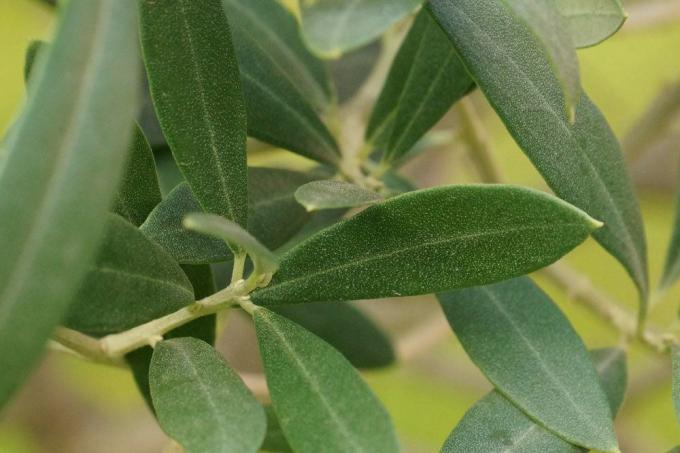
table of contents
- Problems
- causes
- Nutritional deficiency
- Lack of light
- Too much wet
- Fungal diseases
- Leaf spot disease
- Fungal attack
- Wrong wintering
- Pests
Olive trees are quite robust and healthy trees. However, they are not resistant to pathogens and pests. These mainly occur when the care is not right and the keeping conditions are not optimal. Signs of an infestation can include brown leaf tips or leaf fall. In turn, they can be the result of a lack of light, too much moisture, an over- or under-supply of fertilizer or incorrect wintering. Container plants are particularly at risk.
Problems
The most common problems with olive trees
If the Olive tree, especially in winter or After moving to the winter quarters and losing leaves, this is a completely natural process and not a cause for concern. However, if the leaves are increasingly falling, this can also indicate a fungal or pest infestation. Fungi, bacteria or pests can settle and multiply particularly easily on weakened plants.
A possible infestation can express itself in different ways. B. in the form of leaf spots, through brown leaf tips, yellowish leaf discoloration or leaf loss. So that fungal diseases and pests don't stand a chance, optimal conditions should be created in order to strengthen the plants and keep them healthy. If an infestation does occur, it is important to recognize it as early as possible in order to know what the olive tree is missing and to be able to take countermeasures as quickly as possible.
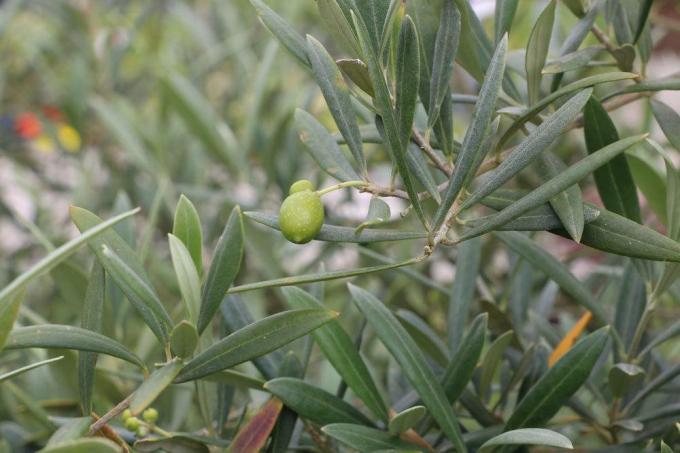
causes
Nutritional deficiency
The foliage gives information about the health of the olive tree. If the foliage changes color to a large extent, turns yellow, dries up from the edges and hangs down, this is often a sign of a nitrogen deficiency. Wilting leaf margins and brown leaf tips can also indicate that too much fertilization has been carried out.
Countermeasures:
Whether, how much and what kind of fertilizer this wood needs depends primarily on the substrate in which it is located. In this country, the olive tree is usually kept in a bucket due to its limited winter hardiness. Here the nutrients are used up relatively quickly, so that regular fertilization is essential. Nevertheless, a certain tactfulness is required when fertilizing, because over-fertilization can cause considerable damage to the plant.
- in case of over-fertilization, a quick change of the substrate is recommended
- If there is a lack of nitrogen, transplant the olive tree into fresh substrate in the coming spring
- or apply a suitable fertilizer
- use a larger planter if necessary
- Commercially available citrus fertilizers are well suited
- Apply fertilizer with the irrigation water
Basically, you should fertilize olive trees kept in a bucket every 2 - 3 weeks from March to September. In the case of planted specimens in milder regions, the plants can also be treated with an organic fertilizer such as B. Provide compost or horn shavings. In nutrient-rich garden soils, additional fertilization is often not necessary.
Lack of light
Light resp. Sun is an important resource for this plant because it needs it for essential photosynthesis. The more she gets, the better, because the olive tree is a true sun worshiper and accordingly loves full sun. However, it is often the case that there is not enough light and the olive tree loses leaves. This phenomenon can occur both in summer and in winter. Lack of light is particularly threatening in the winter months. As a result, some of the foliage can turn yellow and then fall off.
Remedy:
Outside, it is usually relatively easy to place the plant in a sunnier place, provided it is in the tub. In support of this, taller plants or other shading factors should be avoided or, if possible, removed. This applies to both inside and outside. If the lack of light is serious, appropriate plant lamps can also be used for the duration of the winter.
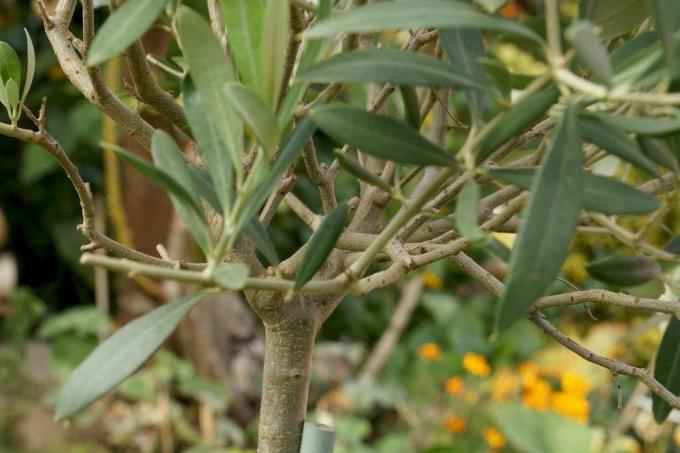
Too much wet
In their natural habitat, olive trees are rather dry. Their roots reach deep into the ground and are heavily branched, so that they can also absorb moisture from deeper soil layers in order not to dry out. Specimens in the bucket are often poured over, which can lead to waterlogging in the root area and thus to rot.
If the rot is already advanced, it can spread to the trunk, the inside of the trunk decomposes more and more, the plant can then often no longer be saved. The whole thing is favored by constant rainfall, missing or insufficient drainage and thus poor water drainage as well as by planters without drainage holes. The olive tree is not used to this state of permanent moisture, so it reacts with brown and crooked leaves, withered leaf tips and leaf loss. In addition, this increases the susceptibility of this plant to diseases and pests.
Countermeasures:
- Repot affected plants in the tub as soon as possible
- Repot in a fresh and drier substrate
- Equip the new pot with a drainage layer
- use a loose and well-drained substrate
- Mix in sand for better permeability
- affects potted plants as well as planted specimens in the garden
- Place the olive tree in a very bright place protected from rain
- Check the moisture content of the soil before every watering
A moisture meter can be helpful to determine the moisture content of the soil, but your fingers will also work. To ensure that excess water can drain off at all times and that there is good ventilation, it can make sense to put the pot on feet away from the floor.
Tip: If the leaves turn brown, curl up or fall off, this can also be signs of drought damage or damage. Be lack of water. Even if olive trees can cope very well with drought, they still need sufficient water, especially in the bucket.
Fungal diseases
Bacterial infestation
Fungal infestation can also be responsible for yellow or brown leaf discolouration, spots and finally leaf loss. This in turn occurs mainly in connection with too much moisture. Particularly noteworthy here are eye spot disease, leaf spot disease and a soot disease caused by the fungus Fumago vagans.
Leaf spot disease
The leaf spot disease caused by a fungus called Mycocentrospora cladosporioides is particularly evident on the undersides of the leaves. They are yellowish with black spots. As a rule, this disease comes from overwintering, for example when the plant sweats under the winter protection.
Measures to combat:
If you notice such a fungal attack, better ventilation should be provided. If the tips of the shoots are still intact, it is usually sufficient to shake the plant vigorously once so that all the infected leaves fall off. The plant can then be treated with a broad spectrum fungicide that contains copper. Combating with biological agents is not possible. If the infestation is already advanced, affected parts of the plant should be cut off generously and disposed of.
Eye spot disease
In contrast to leaf spot disease, the fungus Spilocaea oleagina, responsible for the eye spot disease, attacks the upper surface of the leaves. An infestation occurs above all with persistent rain or overhead watering, i.e. persistent moisture. The tips of the leaves show light spots on the inside and dark, brown or silvery-gray spots on the outside. The plant eventually loses its leaves and the shoots die.
Measures to combat:
First of all, you remove both infested and fallen leaves and dispose of them in the household waste. Then the olive tree is treated with a suitable fungicide according to the manufacturer's instructions. Since the young leaves in particular are very susceptible to this fungus, it is advisable to treat the plant preventively with a copper-based fungicide in the following year. The best time for appropriate spraying is in the spring, which takes place after approx. Must be repeated 10-14 days.
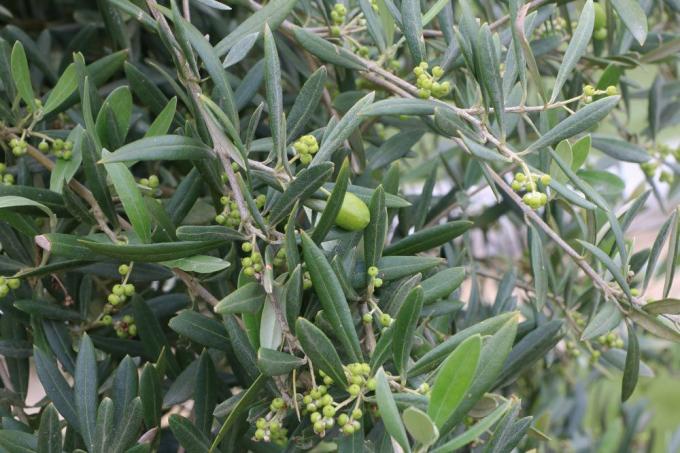
Fungal attack
Fumago vagans
An infestation with this fungus is indicated by a black, soot-like coating on the leaves and the bark of the olive tree. The causes can be too warm overwintering with high humidity, but also the consequence of an infestation with woolly or scale insects. If it is due to wintering, the appropriate protection should be removed and the plant well ventilated. Then only the affected leaves can be wiped off with soapy water. If, on the other hand, a pest infestation is the cause, it must first be eliminated.
Tip: As a rule, this fungus has no effect on the health of the olive tree. Nevertheless, infected leaves should be treated accordingly.
Wrong wintering
In winter it often happens that the olive tree loses leaves, the tips of the leaves turn brown, or the leaves turn yellow or brown. If no serious mistakes are made during the winter, there is no drama if the wood loses leaves. However, if the leaf loss is massive, this can indicate frost damage. Sudden frosts are not uncommon in autumn and spring. If the olive tree is then in an unprotected place outdoors without adequate winter protection, it will lose its leaves. In extreme frosts, the roots can also be damaged. The olive tree can withstand slight temperatures below zero.
If it loses more and more foliage, this may be due to the fact that it has wintered too long, too cool in a dark room. Not only leaf fall but also yellow and brown leaves that do not necessarily fall off can be a reaction to temperatures that are too cold or too cold. Be frost damage. In addition, rising sap streams can lead to cracks in the trunk and shoots due to strong temperature fluctuations. Ice-cold ventilation in winter, to which the olive tree is exposed unprotected, can also result in leaf discoloration. The leaves can be damaged if they come into contact with an ice-cold window pane. On the other hand, brown leaf tips can be an indication of insufficient humidity.
Counteract frost damage
- in the event of damage caused by ventilation, move the plant
- Protect the olive tree with translucent film during ventilation
- Bring trees in the bucket into the house before the first frost
- not outside before the ice saints
- Winter quarters neither too cold nor too warm
- Winter temperatures of 5 degrees are optimal
- then the plant can get by with a little less light
- from a temperature of 10 degrees vegetation sets in
- then it has to be much brighter
- in winters that are colder than minus 5 degrees, overwintering only indoors
- Generally overwinter young plants without frost
- Provide planted specimens with better winter protection
- Protect above-ground parts of the plant and the root area
In order to protect the trunk and branches, sufficient frost protection must be ensured even in spring. When wintering outdoors in particularly mild locations, you should pay attention to a protected location, ideally near the house or in front of a protective object. A translucent, breathable and water-repellent fleece should be used as winter protection and the plant should be protected from direct winter sun. Cracks in the trunk are best wrapped with straw, fleece or the like. Occasionally, on frost-free days, something has to be poured.
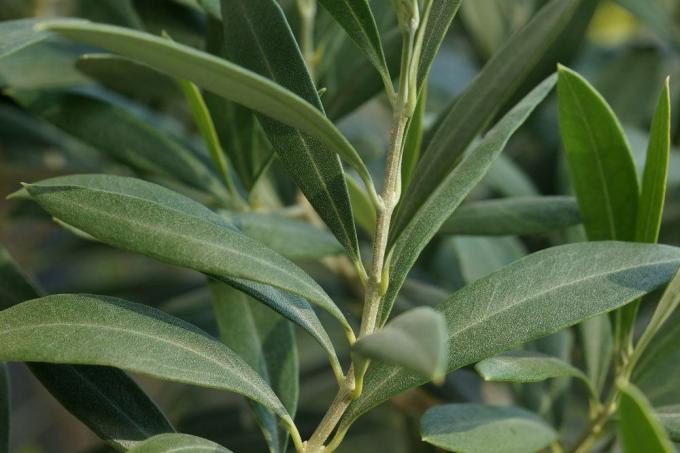
Pests
Pest infestation occurs mainly in winter, although it rarely occurs outdoors. Again, the causes are mainly due to improper care. If the plant loses leaves or shows symptoms such as curled, brown or withered leaves, this can indicate an infestation with scale insects or mealybugs.
Scale and mealybugs love warmth and occur especially during a warm winter. These pests prefer to sit on the underside of the leaves and then quickly spread over the entire plant. In addition, a scale insect infestation can also lead to various fungal diseases.
Fighting is usually difficult. Affected plants should first be isolated and then treated with a systemic agent. Older specimens can be exposed to light frost for a certain period of time, for example overnight, to combat the pest. As a preventive measure, you should ensure a cool winter storage at a maximum of 10 degrees.



